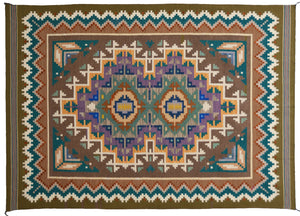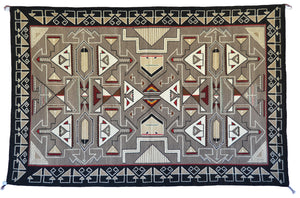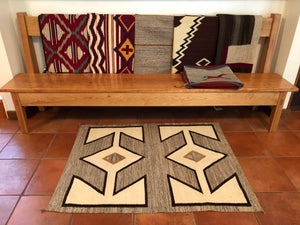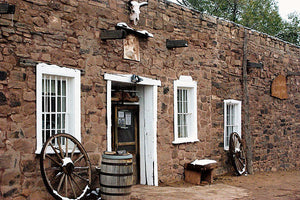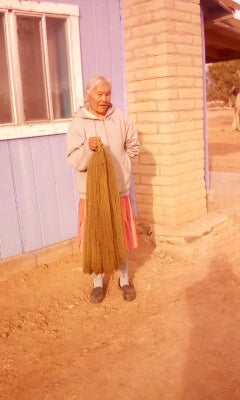2nd Phase or 3rd Phase? Actually In-Between!

It is inspiring when Navajo rug collectors are born. Many immerse themselves so deep it is not long before they become experts. This collector is a perfect example of when the student becomes the teacher.
Please enjoy the following article!
May 1, 2022
Somewhere, Sometime, Somehow In-Between
by Ed B. from Minnetonka, MN
Somewhere, deep in a canyon or atop a high mesa, early Pueblo wearing blankets became the inspiration for the The First Phase Chief-Style blanket, or “beeldlei” in Navajo. This style was a simple broad striped weaving made of native hand-spun churro wool, wider than long and so tightly woven that it shed the rain. These blankets kept one safe by offering protection from the elements. Expensive to trade for, Navajo blankets became highly sought after as a sign of important social status and wealth. Hence the name Chief-Style Blanket.
Sometime in the 1840’s, The Second Phase of the Navajo Chief-Style Blanket began to evolve. The arrival of crimson colored cloth and yarns into the Navajo region and renewed experimentation with designs produced rectangular blocks and bands in the new colors. Positioned onto the simple broad striped pattern, this arrangement created the illusion of space by establishing a stable figure-ground relationship. When small shapes are placed upon larger shapes, the larger shapes are understood to be the background.
Somehow, by the 1860’s, the rectangular blocks and bands were slowly being replaced with triangular and diamond shapes that would define the Third Phase Chief-Style Blanket. Some shapes grew so large that they seemingly reversed the previous figure-ground relationship of the earlier Second Phase.
In-Between, there were early design ventures and continued experimentation with new shapes, colors and yarns that incorporated both the rectangular blocks typical of the Second Phase, combined with early stepped triangular shapes. Examples of this design combination are very rare.
In this early transitional or variant blanket, 1860-1870, stepped triangular shapes have just germinated, appearing to grow out of the straight bands of the Second Phase borders. Observe how these new shapes seem to burst into the broader striped areas. These triangular shapes help to create a newly defined border-contrast phenomena which is surely intensified by the triangular shapes when compared to the earlier straight bands. There exist only a few examples of this blanket design. Some refer to it as simply a Second Phase Variant or an early Third Phase.

- Beth Barth

